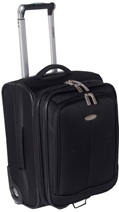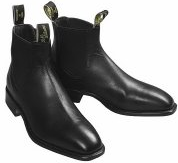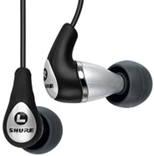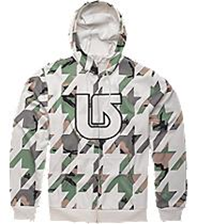So “Plan A” was to try and maintain a bit of momentum on the OWASP Top 10 for .NET developers blog series and post every few weeks. Unfortunately a couple of weeks of work travel preceded by several weeks of preparing material pretty much killed any chance of avoiding a blog free month.
Still, the crisitunity of it all has presented new material in the form of having something far less time consuming but still share-worthy to write about; tenets for pain free travel! Most of us get on a plane at some time or another but only by doing it reasonably frequently have I actually got a rhythm going.
I travel overseas for work maybe a couple of times a year, around once every year for holidays then a whole bunch of domestic, short haul trips for pleasure or personal business. I’ve now got a routine that takes the vast majority of pain out of travel so I thought I’d fill a blog gap with something that might actually be useful to others!
1. Travel light – I mean really light
By far and away the single most pain free tenet is to travel as light as possible. Ideally, this means no check in baggage. Depending on the airline and the class of travel this means either one or two pieces of hand luggage.
The obvious advantage is there is no more need for baggage check-in and more importantly, no more need to wait for it at the other end. But the other advantages include no chance of lost luggage, no waiting for porters at hotels to deliver bags to your room and of course having every single travelling possession within arm’s reach at all times.
 For both work and personal travel, I throw everything I can in a soft wheelie bag as large as allowable by the airline. The carry-on allowances Qantas describes are pretty consistent with most airlines and means you can carry something similar to a Samsonite Ultralite 7 (pictured right), which will fit 5 days plus of clothes without resorting to unsavoury wardrobe-reuse techniques.
For both work and personal travel, I throw everything I can in a soft wheelie bag as large as allowable by the airline. The carry-on allowances Qantas describes are pretty consistent with most airlines and means you can carry something similar to a Samsonite Ultralite 7 (pictured right), which will fit 5 days plus of clothes without resorting to unsavoury wardrobe-reuse techniques.
 For work, I’ll throw the laptop, power, phone and any other electronic bits into a laptop wheelie bag (pictured left). Many of these bags have a strap at the rear which slips over the handle of a travel bag so it sort of piggy backs off the larger bag meaning you can wheel it all around single headedly.
For work, I’ll throw the laptop, power, phone and any other electronic bits into a laptop wheelie bag (pictured left). Many of these bags have a strap at the rear which slips over the handle of a travel bag so it sort of piggy backs off the larger bag meaning you can wheel it all around single headedly.
I know some people like using backpacks for laptops but my problem with that is you end up carrying around two separate bags, assuming it can’t easily attach to the one carrying your luggage. Plus, a backpack can look a little unprofessional once you get to your destination, depending on what it is you do.
2. Think about x-rays and metal detectors before you get to them
It’s a little thing but getting caught up in security is really annoying. Firstly, just don’t pack anything which is going to make it difficult including things like nail clippers and large volumes of fluids. Unpacking your bags in front of 50 other passengers is the last thing you want to do, as much for the time cost as any sense of vanity.
Secondly, you want to get through the metal detectors without dramas. Belts with metal buckles, steel capped shoes and even a pocket full of coins can make this experience inconvenient at least and rather “intimate” at worst. Getting a rub down by security may not seem too bad but if I had to go through this every time I passed through a metal detector on my last trip I would have gotten personal with 8 different security folk which is about 8 more than I’d really like.
3. Wear versatile shoes
 Actually a continuation of the first tenet, go for shoes which are comfortable to travel in, professional enough to wear “on the job” and suitable for all the bits you do in between. Not needing separate shoes for separate events makes packing everything in a whole lot easier.
Actually a continuation of the first tenet, go for shoes which are comfortable to travel in, professional enough to wear “on the job” and suitable for all the bits you do in between. Not needing separate shoes for separate events makes packing everything in a whole lot easier.
I go for RM Williams boots because they tick all the boxes. Obviously the brand isn’t really important but it’s always nice to take something distinctly Australian with me. They may be a little less formal than some would like but if they’re good enough for our politicians, I’m happy enough in the formality stakes!
4. Keep everything important easily accessible
Airports get chaotic really easily; thousands of tired, disorientated travellers often not understanding local language (or pleasantries) and frequently rushing around. You quickly get to points where you need things like boarding passes, passport, travel docs and electronics really quickly and if you’re rushing and fumbling it’s going to be an unpleasant experience with an increased chance of losing something.
One of the reasons I like the travel bags is because they’re a place for everything and it’s always easy to locate. Passport for check-in plus boarding pass for customs (both in and out) then again at the gate. The other great thing about this bag is that the laptop slips out easily for the x-ray machine then back in again at the other end so you’re not standing around with throngs of people slowly getting their gear back together (often including their clothes) – you just breeze through with deft moves.
5. Get some good noise-cancelling headphones
 Airplane headphone suck. Even when you’re travelling towards the pointier end of the plane, they’re still not great. Some airlines do distribute reasonable noise cancelling headphones but they still fall way short of ideal.
Airplane headphone suck. Even when you’re travelling towards the pointier end of the plane, they’re still not great. Some airlines do distribute reasonable noise cancelling headphones but they still fall way short of ideal.
Decent noise cancelling headphones take out a lot of the ambient noise you get in an aircraft and can make a big difference to how refreshed you feel at the other end. There are two schools of thought for noise cancelling; active and passive.
Active variants such as the Bose QuietComfort will pump in appropriate white noise to counter the environment while passive variants such as Shure in-ear buds simply block the noise from getting in, just like earplugs. Some people find the in-ear versions a little uncomfortable and go for the headphone style versions. However you do pay a lot more money for these and they take up a lot more room which is kind of the anti-pattern for travelling light. For these reasons I prefer my set of Shure SE310s plus I can leave them in when I want to sleep.
Last point; don’t forget to acquire a 2 prong adaptor suitable for aircraft audio systems so your 35mm jack can actually plug into something!
6. Take printed copies of all your travel docs
Keep a physical copy of every ticket, hotel booking and transport arrangement somewhere handy. When you really need this, you’re often rushed and standing in the middle of a crowd. Electronic copies simply don’t carry the same weight as something physical, plus you definitely don’t want to hand your laptop or phone over to someone who disappears to seek advice from a supervisor.
Even just last week I needed to call a hotel while standing around in a foreign arrival lounge looking for my transport. Having the info really handy – and readable while I was on the phone – meant getting the whole shenanigan sorted out in a few minutes rather than fumbling around with devices trying to look things up.
7. Dress for temperature variations
 Airports, planes, lounges, ground travel – each one with its own damn temperature! I continually find myself getting either hot or cold as I move through different environments.
Airports, planes, lounges, ground travel – each one with its own damn temperature! I continually find myself getting either hot or cold as I move through different environments.
I now wear a long sleeve t-shirt where I can roll up the sleeves and carry a hooded fleece for when the cabin attendants decide to try and emulate the outside temperature at 35,000 feet. The fleece goes into the laptop bag when it’s too hot and the hood is handy for blocking out the stuff around you (both visually and audibly) when you actually want to try and get some sleep. I now carry a very comfy Burton hoodie with a woolly lining which is just perfect.
8. Check-in online or at an electronic booth
A lot of airlines now support fully electronic check-in when you’re only carrying cabin baggage (some also allow this with check-in luggage and provide a “bag drop” facility). Obviously the big plus is that you can skip that massive queue which often seems to snake back from the economy class check-in for miles.
The other advantage is you can often choose your seat well before others check-in so you have a bit more choice. The caveat to this rule is that without physically being present at the check-in, the exit rows are usually off limits as the ground staff needs to verify you’re of “able body” before seating you in a position where you potentially have to assist other passengers in an emergency. Personally, at 6’5” I tend to do my darndest to get that seat!
9. Take meds – lots of meds
I’ve had food poisoning on work trips twice in recent years and they were both about the most miserable experience I could imagine. Even on this last trip I had a sore throat and hardly any voice for the first few days and what really made the difference between it being miserable and tolerable was having the right medication with me.
You can never be too sure what medication you can get at your destination and even if you are, chances are when you really need it you won’t feel like searching for it. Beyond the usual daily routine of vitamins, here’s what I won’t travel without appropriate treatment for:
- Cold and flu (be a bit careful with this one, many medications contain pseudoephedrine which can be used to create illicit drugs and may not be acceptable at your destination)
- Sore throat (gargle or lozenges)
- General pain (such as a headache)
- Strong pain (anti-inflammatory such as Nurofen Plus)
- Stomach cramps
- Diarrhoea
- Dehydration (electrolyte replacement such as Gastrolyte which is useful after diarrhoea or vomiting)
- Insomnia (sleeping tablets for a worst case scenario only, but very welcome when you really do need one)
Hopefully you end up coming home with lots of unopened packages but when you do have to open one, you really, really appreciate having when you need it.
10. Don’t forget the entertainment
 Hopefully you’ll get a broad selection of video-on-demand on the plane but at worst you’ll end up with a few channels of video simultaneously broadcast to everyone (remember what life was like before DVRs?!). Either way, you’re still going to be sitting around at airports and in ground transport for a while and that gets very boring, very quickly.
Hopefully you’ll get a broad selection of video-on-demand on the plane but at worst you’ll end up with a few channels of video simultaneously broadcast to everyone (remember what life was like before DVRs?!). Either way, you’re still going to be sitting around at airports and in ground transport for a while and that gets very boring, very quickly.
I throw in enough books, magazines and DVDs (plenty of Top Gear, thank you very much), to guarantee amusement for more time than I’ll ever have free. Of course there’s also the obligatory iPhone full of music as well (goes great with the Shure noise-cancelling headphones) which is really appreciated when you’re sitting around at an airport in the middle of the night.
Last point on entertainment; don’t forget tenet 1! Books especially are an anti-pattern for travelling light so be a bit selective.
Wrap-up
None of this is rocket surgery, it’s just really simple stuff you often don’t think about until it’s too late and then you forget about next time around. Hopefully these tenets makes travel a little more enjoyable for others in the future J